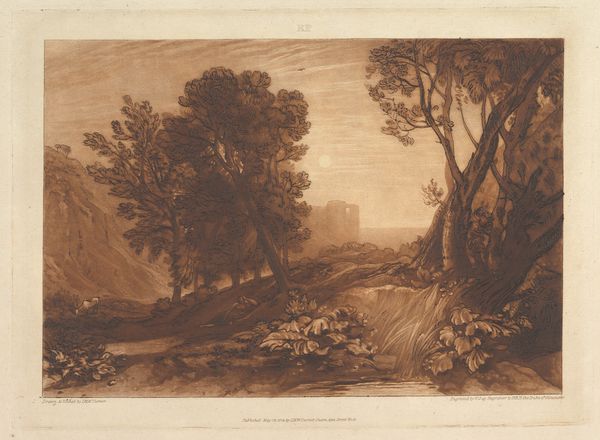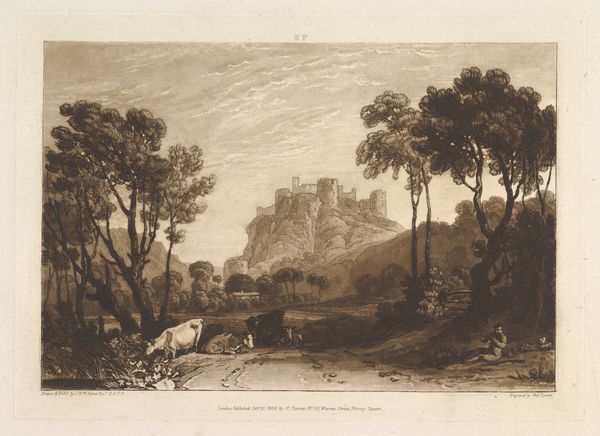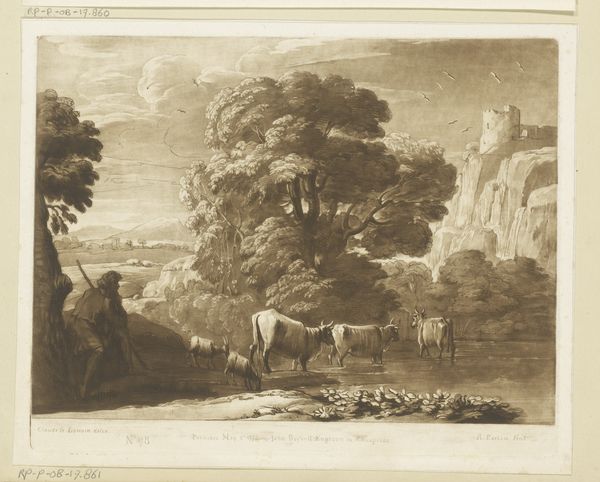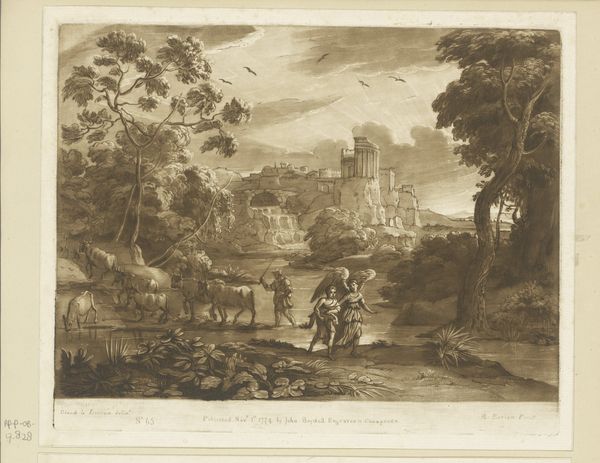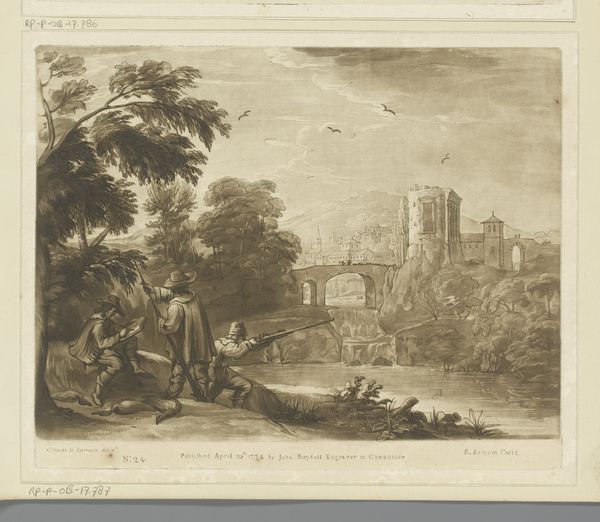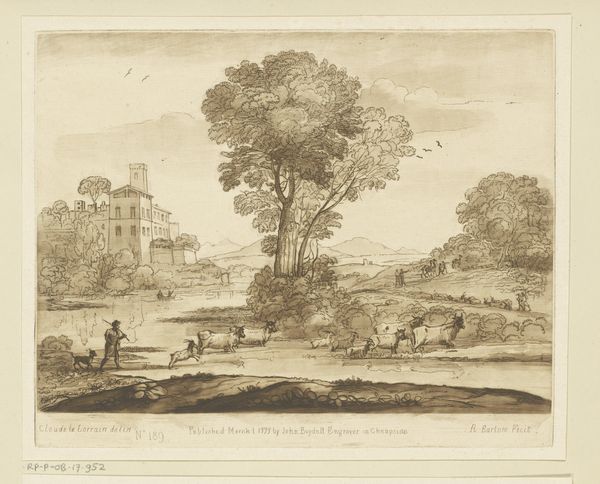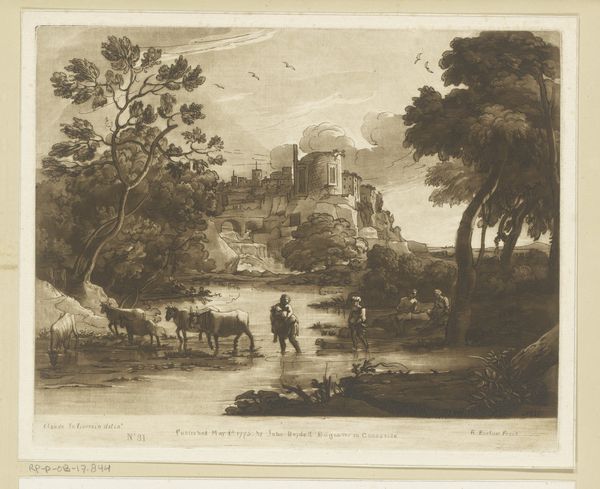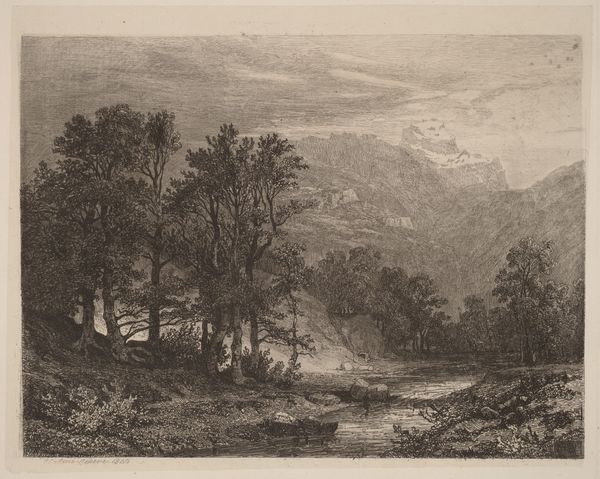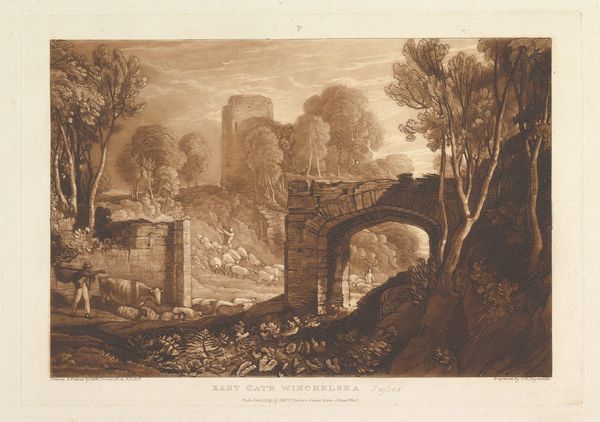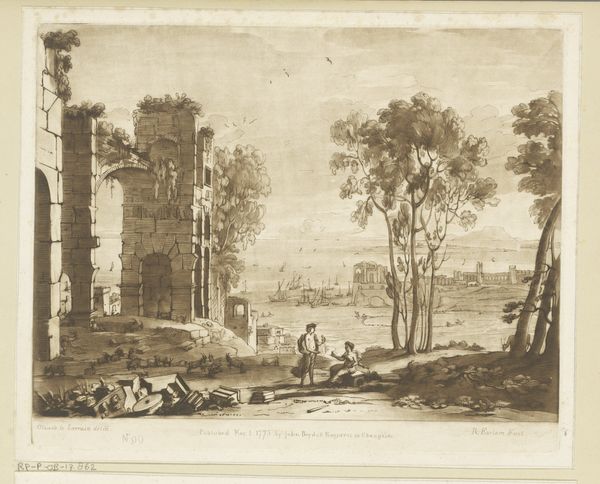
Winchelsea Sussex (Liber Studiorum, part IX, plate 42) 1812
0:00
0:00
aquatint, drawing, print, etching
#
aquatint
#
drawing
# print
#
etching
#
landscape
#
child
#
romanticism
#
men
Dimensions: plate: 7 3/16 x 10 3/8 in. (18.3 x 26.4 cm) sheet: 8 1/4 x 11 7/16 in. (21 x 29.1 cm)
Copyright: Public Domain
Curator: Looking at "Winchelsea, Sussex," created by J.M.W. Turner in 1812 as part of his Liber Studiorum series, one can’t help but consider Turner’s role in shaping the aesthetic appreciation for landscape and the picturesque. Editor: It’s sepia-toned and rather dreamlike. The composition has a deliberate staged quality with those figures nestled near the rocks. You're instantly drawn in, almost like viewing a memory fading at the edges. Curator: Indeed, Turner was very calculated. These prints were exercises in creating a visual grammar of landscape, classifying different types from "pastoral" to "heroic." Winchelsea, like many others, aims to evoke a certain mood, blending history, topography, and allegory. Think of how the art market encouraged this hierarchical viewing structure for decades after this was produced. Editor: Right, the means and message intertwine so deeply here. We're talking etching and aquatint – techniques which are far more laborious than quick sketches on site. Each impression made of "Winchelsea, Sussex" carries the physical weight of the printing process and it's designed to create specific aesthetic experience, framing and domesticating a landscape for mass consumption, as romantic and beautiful through its materiality as the vision that he attempts to suggest within it. Curator: It's also a pointed decision to include figures, note their size relative to the ruined tower—Winchelsea's history of decline and renewal reflected, literally embodied by those observing figures! Landscape wasn’t simply a backdrop. It becomes about man's interaction with nature and the narratives constructed around these places. Editor: The subdued tonal range contributes to a certain elegance. And beyond that, Turner highlights the transformative capabilities of reproducible art, and by that I mean art that, in many ways, democratizes access for consumption and encourages a wide circulation of specific notions of taste, of beauty. Curator: It highlights that constant tension between romantic idealism and the industrial means of producing it. This was a piece meant to be purchased, collected, circulated – playing a specific cultural role. Editor: Considering this as part of his larger project is interesting. I keep thinking of the plates printed, ink applied, each print slightly unique yet bearing that standardized romantic perspective that became so enmeshed in landscape. Curator: Yes, each print carries Turner's intent, the artistic choices embedded in its creation. It’s through such artworks that we see the evolution of landscape from a backdrop into a potent vehicle for expression and social commentary. Editor: It shows the intersection between labor, location, artistic vision and romantic desire. And to think, its quiet stillness conceals the complexities of its making.
Comments
No comments
Be the first to comment and join the conversation on the ultimate creative platform.
